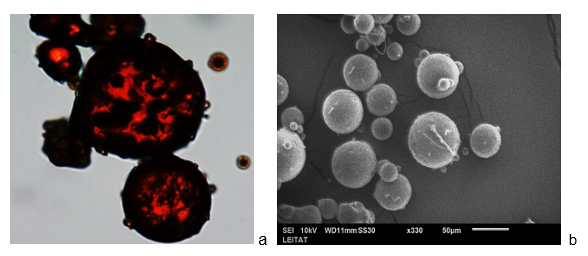SITEC pharmabio has successfully completed the construction and installation of a new, R&D pilot-scale CO2-Cryospraying equipment, introducing innovative features to develop lipid and lipid-polymer microspheres containing bioactive molecules from natural sources. The solid microspheres can be designed with properties that can ultimately improve the biomolecules efficacy, and can be used in food supplements, nutraceuticals and pharmaceutical products.
In CO2-cryospraying technology microspheres are formed at low temperatures, allowing to process unstable molecules that otherwise may be degraded by heat.
Furthermore, this micronization technology is eco-friendly, since it does not require the use of organic solvents, and consumes very low amounts of CO2, that may be recovered and recycled
The new pilot-scale Cryospraying equipment is based on the original Variosol® technology, where dense-CO2 expands, mixes with a sprayed fluid and produces micronized fine powders. During the expansion, CO2 acts as cryogenic agent and transforms the formulated, sprayed liquids into solid microspheres.

Optical microscopy (a) and SEM (b) images of formulated microparticles produced by CO2 - Cryospraying technology
One important property of the technology is the potential to eliminate significant amounts of water from dispersed systems at low temperatures, during the CO2 expansion and microparticles formation. SITEC pharmabio has patented this innovation, that can be applied to directly produce composite microparticles containing both hydrophilic and lipophilic moieties in the same delivery system.

The design and construction of the new R&D pilot equipment were undertaken in the framework of CAMINA, a research project partially funded by CDTI (Spanish Centre for the Development of Industrial Technology), under the call PID-2017, and it is being performed in close collaboration with LEITAT technology center.
